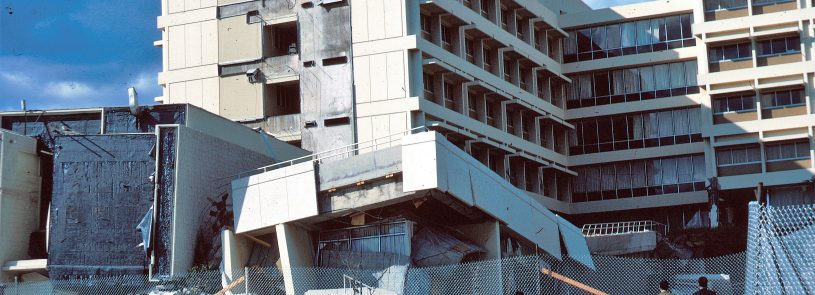3 questions to help define the structural integrity of your hospital in response to a disaster

Second in a series of excerpts from the IMEG executive guide, “The Importance of Healthcare Resiliency: Preparing Your Hospital for a Crisis.”
By Eric Reinsch
Natural disasters may be unstoppable, but that does not mean your hospital cannot take intentional and necessary steps to lessen their impact.
While the structural and architectural design of your building doesn’t necessarily need to address every potential natural disaster, it should be able to withstand common events for your area, as well as potentially devastating, but unlikely chance occurrences, such as fire. In addition to establishing procedures and educating your staff on hospital policies in the event of these disasters, you should consider these questions:
Do you want your hospital to be a community beacon?
Assuming your hospital makes it through whatever disaster befalls your community, you’ll need to consider whether you want your hospital to become a community beacon – a place where communities often turn for safety and as a gathering place amid chaos and tragedy. It is not uncommon for people with nowhere else to go during a disaster to go to a hospital, even if they don’t need medical care.
If you do want your hospital to serve this purpose, you’ll need to enact procedures to ensure it is prepared to do so. First and foremost is the designation of a disaster response area – ideally one that is hardened against potential disaster effects and prepared to take on an influx of people.
Does the physical design of your building pose any challenges?
Consider how the layout of your building would function in a disaster. For instance, are your emergency generators or back-up fuel pumps in the basement? This could leave your hospital without these critical systems in the event of a power outage if your basement experiences flooding.
Also consider the locations of the emergency exit stairwells in your building. Ideally, they should discharge into remote areas of your hospital that aren’t high risk for damage or, in the case of an active shooter, a physical attack. To create safe fire exits, stairways should also be maintained with positive pressure from a clean source of air, which will help keep smoke and toxic fumes out.
Since there are numerous variables in the physical design of your building that could become hazardous during a natural disaster, the safest and most thorough course of action is to conduct a full building vulnerabilities assessment with a professional.
Is the hardness of your building prepared to handle adverse conditions?
“Hardness” refers to the process of reinforcing individual systems within your hospital to make them more resilient. For example, during a natural disaster, your building could be subjected to high winds and substantial rains. By hardening your building to take on these outside forces, you can minimize damage and ensure critical areas remain safe, allowing your hospital functions to continue.
While building codes require your building to be able to withstand a certain wind level, further hardening may be necessary if hurricanes and tornados are common in your area. Seismic resiliency also must be addressed and is enforced by code in hospital buildings along the West Coast and particularly in California, where earthquakes are prevalent.
While many hospitals wait until it is too late to make structural changes designed to improve resiliency, there’s no such thing as being too prepared. Preemptively improving the resiliency of your hospital through architectural and structural changes can make all the difference in your facility’s ability to withstand a disaster.
To learn more about this topic, read the IMEG executive guide, “The Importance of Healthcare Resiliency: Preparing Your Hospital for a Crisis.” For summaries of other topics in the guide, read:
- Resilience in healthcare: Five key areas for reducing risk during a disaster
- 4 key areas of MEP resilience reduce healthcare facility risk during a natural disaster
- Enhance hospital security through CPTED principles
- Prepare for mass casualty events and infectious outbreaks
- Improve healthcare cyber security with holistic approach to technology design
- Bonus: 10 key areas for hospital disaster preparedness












